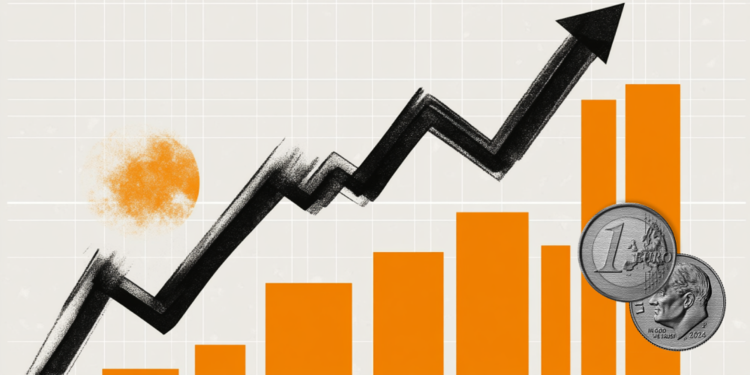The Euro (EUR) trades with a modest bid against the US Dollar (USD) on Friday, with EUR/USD stuck within this week’s range of 1.1750-1.1700. At the time of writing, the pair is trading around 1.1745, up about 0.22% on the day, as traders weigh the latest Eurozone and US PMI reports for clues on growth momentum and monetary policy outlook.
The Greenback remains under pressure as the United States (US) government shutdown stretches into its third day, heightening concerns about near-term growth and fiscal stability. The US Dollar Index (DXY), which tracks the Greenback’s value against a basket of six major currencies, trades around 97.75, hovering just above the weekly low of 97.46 as political gridlock and softer data weigh on sentiment.
Mixed US data underscored a cooling in services activity and labour demand. The ISM Services Purchasing Managers Index (PMI) slipped to 50 in September from 52 in August. The New Orders Index plunged to 50.4 from 56, while the Employment Index remained in contraction at 47.2, marking the fourth straight month of job weakness despite a slight uptick from 46.5.
Meanwhile, the S&P Global Services PMI eased only slightly to 54.2 from 54.5, and the Composite PMI slipped to 53.9 from 54.6, both staying in expansionary territory but pointing to a mild loss of momentum in the private sector.
On the European side, the Euro found limited support as data showed modest growth and ongoing disinflation. The HCOB Composite PMI for September edged up to 51.2 from 51 in August, marking its highest level since May 2024 and coming in line with forecasts, while the Services PMI rose to 51.3 in September from 50.5 in August, just shy of the 51.4 forecast.
Beyond the economic data, Chicago Fed President Austan Goolsbee struck a cautious tone, saying he was “a little wary about front-loading too many rate cuts and just counting on inflation going away.” He warned that “both sides of the Fed’s mandate are deteriorating” and added that “the longer we go without the official statistics, the more blind we will be about what’s going on in the economy,” highlighting the policy uncertainty caused by the delayed data amid the government shutdown.
In contrast, European Central Bank (ECB) President Christine Lagarde noted in an interview with Finland’s MTV Oy that the Euro area has shown more resilience than anticipated, stressing that “we will do what’s needed to meet the mandate and we have done a lot.” She added, “We are in a good place, and we have to make sure that we stay in that good place.”
Euro Price Today
The table below shows the percentage change of Euro (EUR) against listed major currencies today. Euro was the strongest against the Japanese Yen.
| USD | EUR | GBP | JPY | CAD | AUD | NZD | CHF | |
|---|---|---|---|---|---|---|---|---|
| USD | -0.25% | -0.33% | 0.09% | -0.13% | -0.21% | -0.28% | -0.35% | |
| EUR | 0.25% | -0.03% | 0.35% | 0.13% | 0.05% | -0.04% | -0.10% | |
| GBP | 0.33% | 0.03% | 0.40% | 0.14% | 0.08% | -0.01% | -0.08% | |
| JPY | -0.09% | -0.35% | -0.40% | -0.22% | -0.32% | -0.39% | -0.47% | |
| CAD | 0.13% | -0.13% | -0.14% | 0.22% | -0.06% | -0.15% | -0.22% | |
| AUD | 0.21% | -0.05% | -0.08% | 0.32% | 0.06% | -0.08% | -0.16% | |
| NZD | 0.28% | 0.04% | 0.00% | 0.39% | 0.15% | 0.08% | -0.07% | |
| CHF | 0.35% | 0.10% | 0.08% | 0.47% | 0.22% | 0.16% | 0.07% |
The heat map shows percentage changes of major currencies against each other. The base currency is picked from the left column, while the quote currency is picked from the top row. For example, if you pick the Euro from the left column and move along the horizontal line to the US Dollar, the percentage change displayed in the box will represent EUR (base)/USD (quote).
